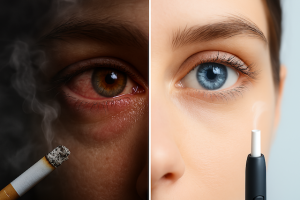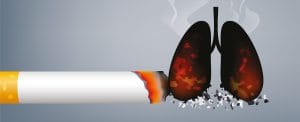SMOPHED is the first study coordinated by CoEHAR that analyzes the health status of patients accessing the emergency department and their smoking habits. A project that evaluates the cost-benefit ratio of using combustion-free products and their impact on healthcare costs and policies.
URL: https://www.researchprotocols.org/2024/1/e54041
Catania, April 26, 2024 – How much do smokers burden the national healthcare system? How much would be saved if all smokers switched to low-risk products? These are the questions investigated by CoEHAR researchers at the University of Catania, who have just launched an important study aimed at analyzing the correlation between the health data of patients arriving at hospital emergency department and their smoking habits. As we know, more than 40 million smokers worldwide have decided to switch to reduced-risk products to decreased the harm caused by the combustion of conventional cigarettes.
But how much would harm reduction and the reduction of smoking-related diseases affect international health policy strategies? Would there be fewer hospital admissions without conventional cigarette smoke? The answer will be provided by questionnaires administered to over 3000 hospitalized patients whose smoking habits and potential use of combustion-free products will be analyzed to assess the causes of hospital admission and the subsequent outcomes of the diseases identified. According to numerous studies, the use of combustion-free products results in significantly lower exposure to toxic components and therefore health benefits, but data on the epidemiological impact of these products on the population are still being evaluated.
The SMOPHED study (Tobacco SMOking and nicotine PHenotype and severity of clinical presentation at Emergency Room Department) aims to analyze the association between the severity of clinical presentation observed during ED visits among patients using various nicotine products and the subsequent outcomes. Specifically, data from the first hospitalization and the potential mortality rate related to different consumption patterns are evaluated. According to data collected upon admission to the emergency room, the number of smoker patients with more severe clinical outcomes, and therefore with a higher hospitalization or mortality rate, is higher than non-smoker patients.
As explained by Prof. Davide Campagna of the Department of Clinical and Experimental Medicine at the University of Catania: “We intend to assess whether, and if so how, the use of electronic cigarettes and heated tobacco products can influence both emergency room admissions and health, through an analysis of real data from patients presenting to emergency departments, often the first and only point of contact for smokers with the healthcare system.”
Based on statistical data from admissions to the Emergency Department of the “Gaspare – Rodolico” Polyclinic Hospital in Catania, it is estimated that approximately 1500 smoker patients, 1000 former smokers, and at least 350 dual users will be recruited. Participants will be selected shortly after triage admission, during the evaluation phase by hospital staff necessary for assigning urgency levels. At this stage, the patient will complete a questionnaire declaring whether they smoke, vape, or use both instruments.
However, in addition to clinical monitoring and adequate assistance, to improve a patient’s condition, validation scales are often used (such as the News – National Early Warning Score) which detail the person’s conditions, clinical evolution, and severity of the illness. “We will not only evaluate exposure to different types of nicotine-containing products, but we will also use the data collected for assigning the NEWS score – adds Prof. Riccardo Polosa, founder of the CoEHAR – the one used for admission to the emergency department, which highlights the severity of the illness. Our hypothesis is that the use of combustion-free electronic devices is associated with a much lower NEWS score, and therefore with less severe illnesses resulting in shorter emergency department stays, fewer negative outcomes, and consequently savings in terms of costs borne by the national healthcare system.”
The data from SMOPHED can be used to contribute to the implementation of health policies that take into account harm reduction strategies and that can reduce the number of emergency facility admissions, waiting times, and all related costs incurred by the national healthcare system.




